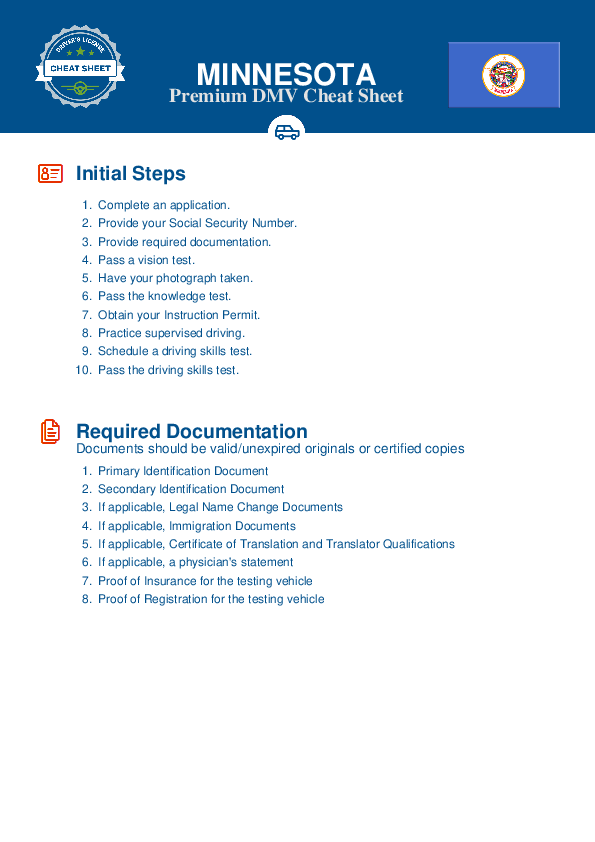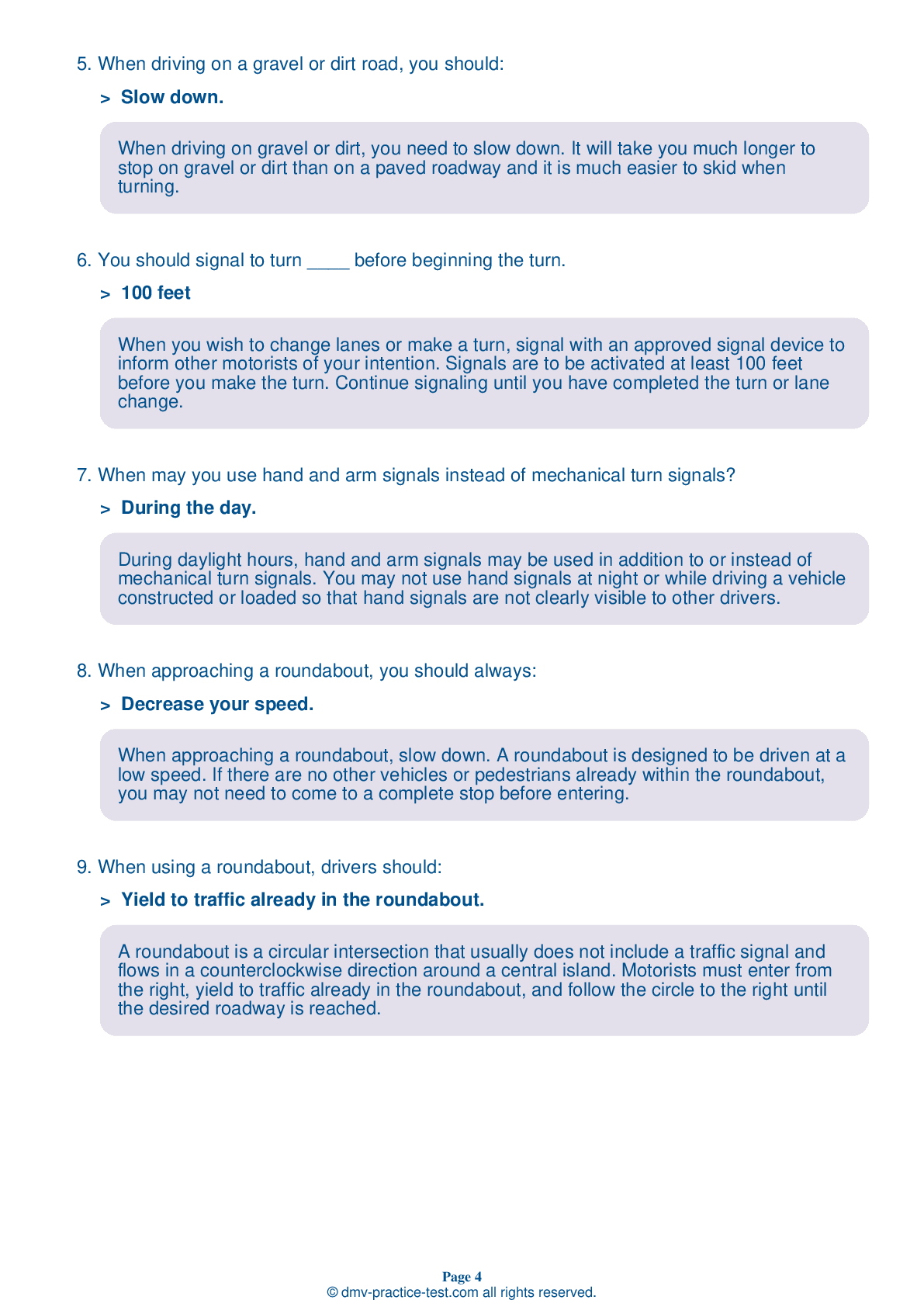FREE Minnesota DMV Practice Test #10 Page 2 of 5
The Minnesota DMV practise examinations have been updated for January 2026. It includes questions based on the Minnesota Driver Handbook's most essential traffic signals and laws for 2026. Use actual questions that are very similar (often identical!) to the DMV driving permit test and driver's licence exam to study for the DMV driving permit test and driver's licence exam.
On the practise exam, each question gets a tip and explanation to help you remember the concepts. The written component of the official Minnesota DMV test will include questions about traffic rules, traffic signs, and driving statutes, as well as knowledge from the Driver Handbook.
To obtain a passing grade, you must correctly answer 32 of the 40 questions. To help you prepare for your instruction permit or driver's licence, take our Minnesota DMV practise test.
The DMV exam is available in several languages.
Using any kind of testing assistance will result in an automatic fail, and the DMV may take additional action against your driver's licence, so stay away from it.
9 . Which of the following are used on some highways to direct drivers into the proper lanes for turning?
Arrows may be used to indicate which lanes should be used for specific purposes, such as driving straight or making a turn.
10 . Which of the following statements is true?
When passing, you must always signal at least 100 feet in advance of your lane change. Always check behind you in your mirrors and look over your shoulder to check your blind spot. Wait until you can see both headlights of the passed car in your rearview mirror before returning to your original lane.
11 . This sign means:





